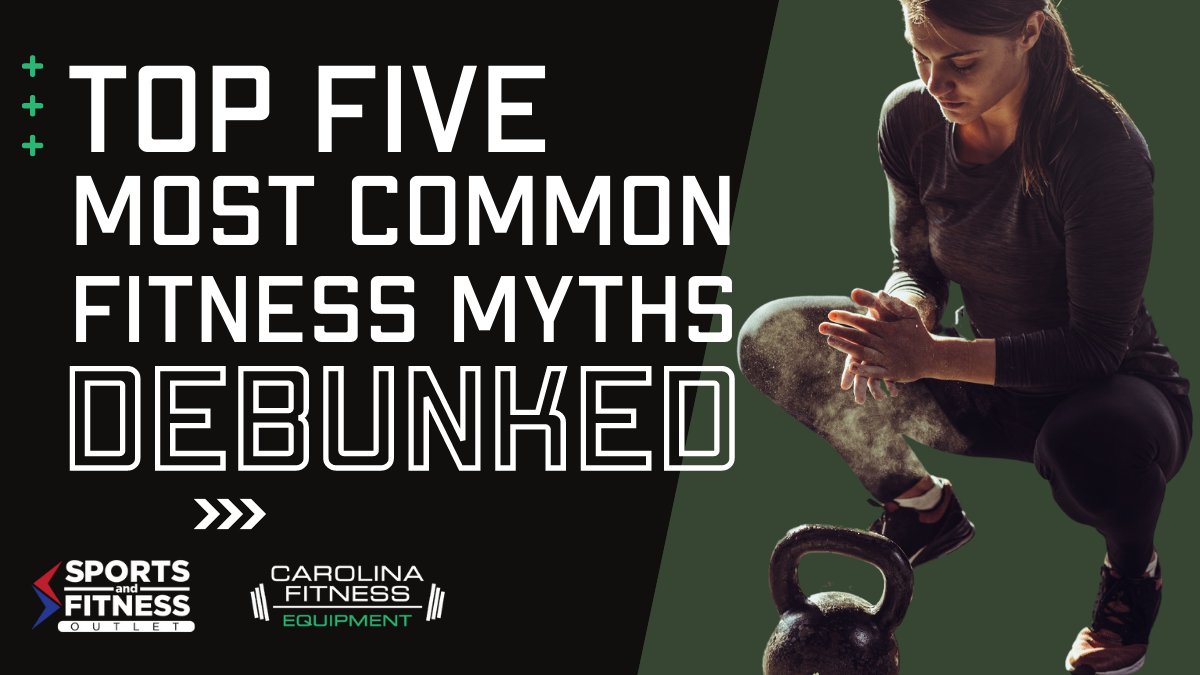Busting Fitness Myths
When you're trying improve your personal fitness, it's crucial to be following the right guidelines in the gym. This can help you to avoid chance of injury, to apply the best form, and to get the most out of your workouts. But all too often, folks will go about their routine following awful fitness advice they've taken as fact. To correct some of these widespread misconceptions, we're discussing the top five most common ones that may trip you up along your fitness journey.
"Women need different exercises than men."
The myth we’re starting out with is particularly common, because it’s often said that women must alter their workouts to be different than a man’s in order to avoid getting bulky. Specifically, the idea is that ladies should focus on lifting lower weights with higher repetitions compared to men so they can maintain a more feminine figure. This idea is a persistent one, but alas, it’s very false.
Personal trainer Mark Wiedenbach discusses this topic in a recent Forbes article (1), and explains that both sexes have different hormones but ultimately possess identical body structures. This indicates there’s potential for difference in muscle strength, but does not suggest that they should be exercising those muscles any differently. Wiedenbach tells us that “women lifting low weight persistently won’t work because the resistance is too low to create change in the muscle. Everyone should go for the same amount of reps with a weight that challenges them,” as an individual and not as a certain gender!
"Lifting heavy builds bulky muscle."
It would be really great if lifting heavy weights automatically created big, bulging muscles. Unfortunately, that’s just not the case. Attaining big gains is much more complicated than just lifting weights, but often, people think that’s really all there is to it. In reality, growing noticeable muscle mass is based on a number of variables, such as protein intake and body fat percentage to name just a couple.
This myth goes hand-in-hand with the wishful thinking that exercise can erase bad eating habits. In the same Forbes article, Wiedenback describes how 80% of what you look like is based on diet. To get big muscles, it’s critical to keep body fat at a minimum while still consuming enough protein to support recovery. This is a calorie game that can be tricky for those who keep on believing in this myth.
"You should always stretch before exercise."
Stretching before a workout is something many folks do just because they were told they should, but we’re here to debunk this long-standing suggestion. Intuitively, it’s easy to assume that stretching elongates the muscles and helps to prevent injuries; However, research has provided conversing evidence of this. It was found that stretching before exercise will weaken the muscle by 30%, and the reduced tension can actually increase risk of injury.
Instead of stretching before you hit the gym, we suggest partaking in some light cardio as a warm-up. Save all those stretches for after your exercise when they will be the most beneficial.
"I can just tone my muscles."
We hate to burst the pervasive “toning” bubble, but the concept of “toned” muscles isn’t really a real thing. Human anatomy tells us that our muscles are already toned or we wouldn’t even be able to move around. People often set a goal to tone because they’re craving muscle definition, but this is the wrong way of looking at an exercise plan.
A better set up to increase muscle definition should focus on getting rid of the layer of fat that sits atop the muscle. This includes fixing your diet and building strength in different areas. “Toning” is a made up word that attempts to oversimplify this process, so it’s best to bust that myth out of your head the next time it comes up.
"I should max out constantly to gain muscle mass."
What most gym-goers forget is that strength training doesn’t have to be done in a gym, nor does it have to include weights or machines. Anything that creates resistance is fair game for building strength. While it may seem that your own body weight wouldn’t be enough of a workout, the results of this type of exercise may surprise you—all without needing to even step foot in a gym or pick up a dumbbell.
All without the need to max out your capacity, too! It’s easy to go for the heaviest weights all the time with the goal to accelerate muscle growth, but we promise, this doesn’t make you get big any faster. In fact, you’re putting yourself at a higher risk for injury each time you max out. The real key to big gains is consistent practice with manageable levels of resistance. Your muscles need to be comfortable working with 85% capacity of your max before you even think of going heavier.
Did we bust any of these myths for you? Do you have any more myths to share? Let us know on our social media channels!
+ If you find this blog post helpful, feel free to share a link to this article with your network or people you know who might need it.
An easy way to do that is by using one of these links: SHARE THIS BLOG POST ON FACEBOOK, TWITTER, LINKEDIN, or PINTEREST.
1. Goudreau, J. (2021, June 30). Top 10 most common fitness myths. Forbes. Retrieved September 5, 2022, from https://www.forbes.com/sites/jennagoudreau/2012/01...



